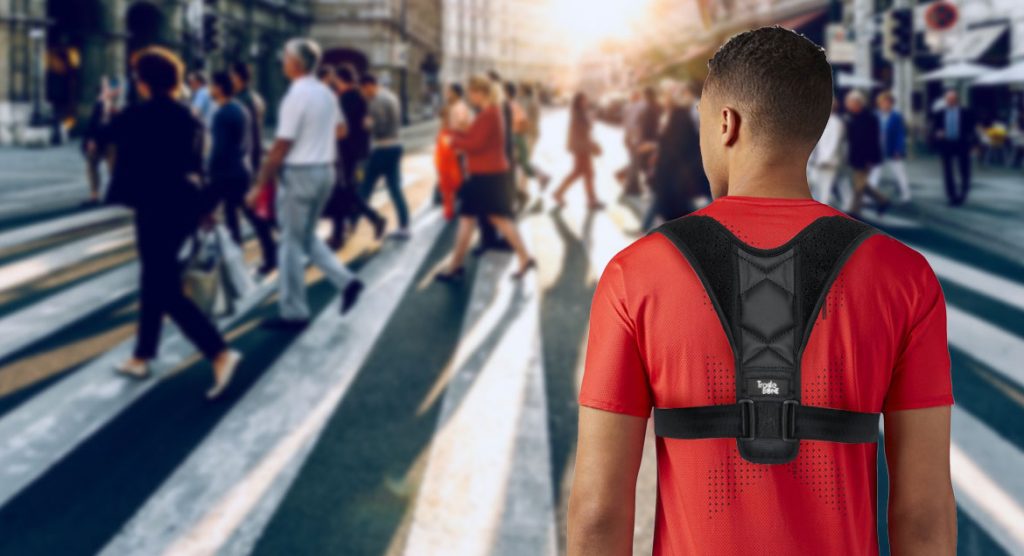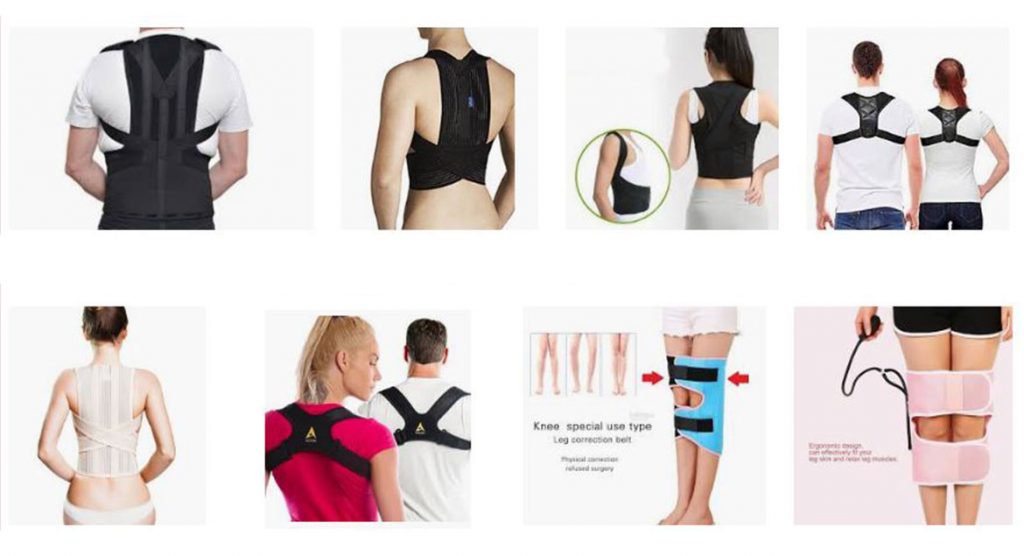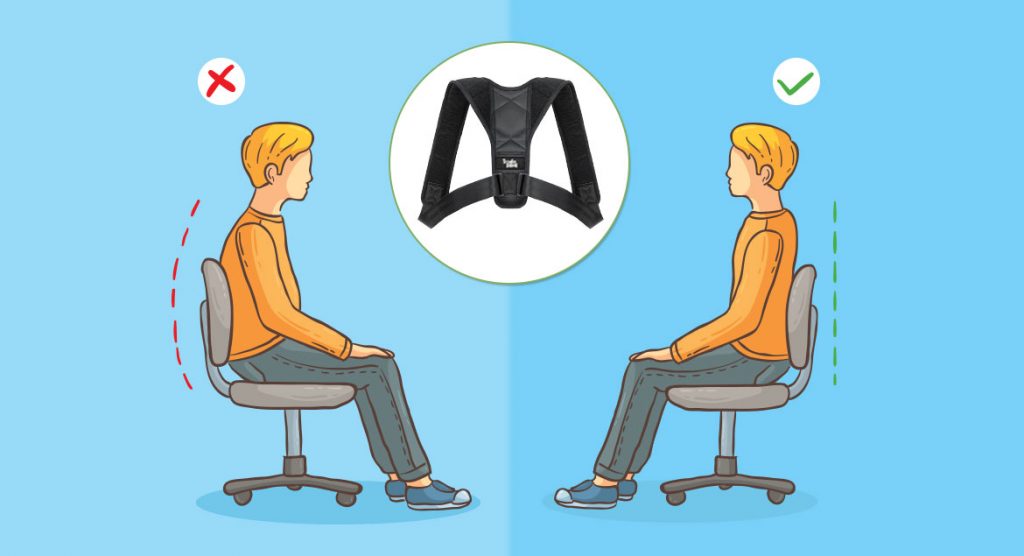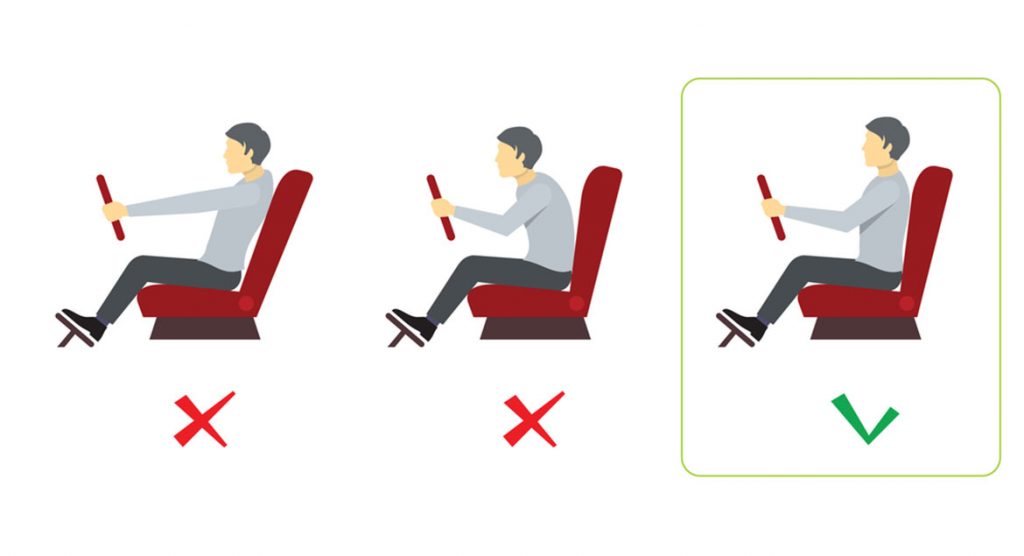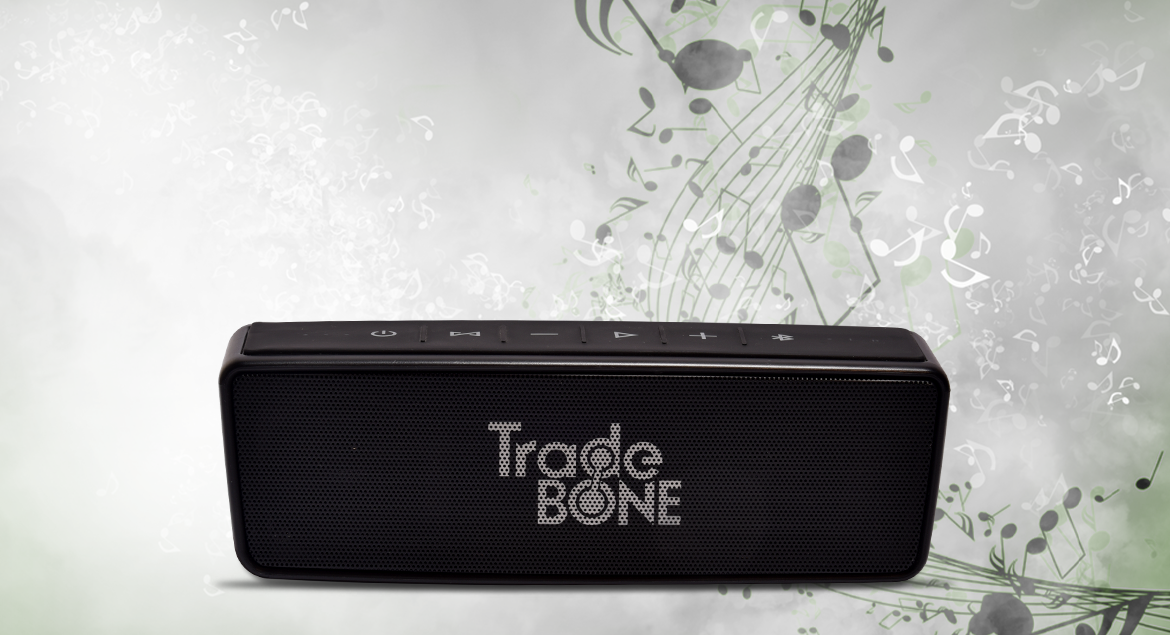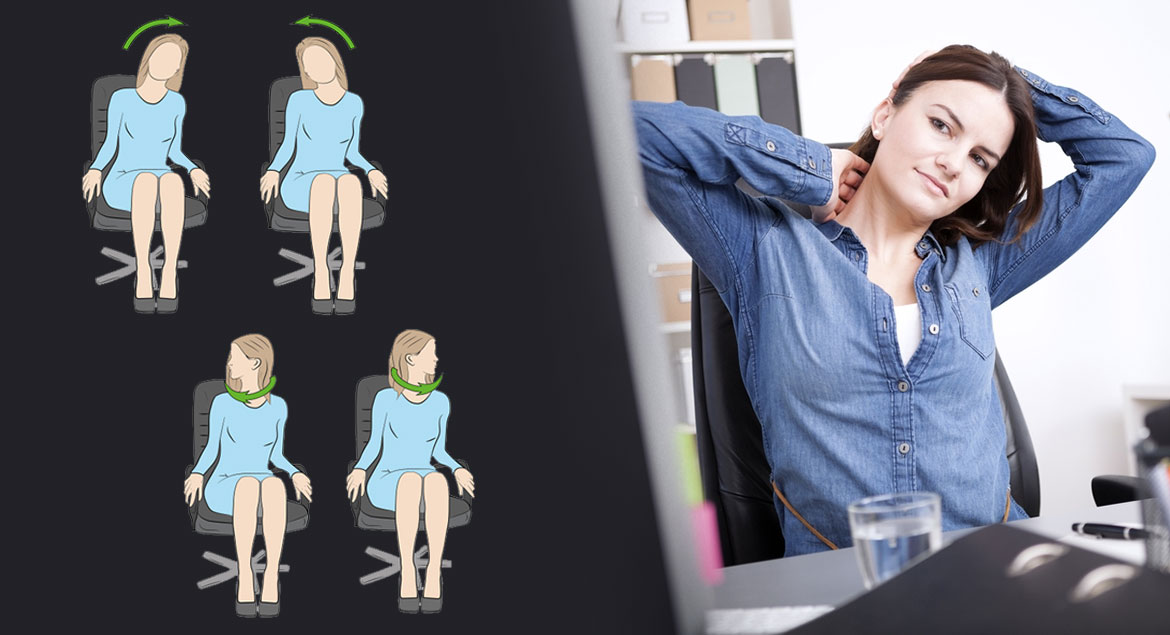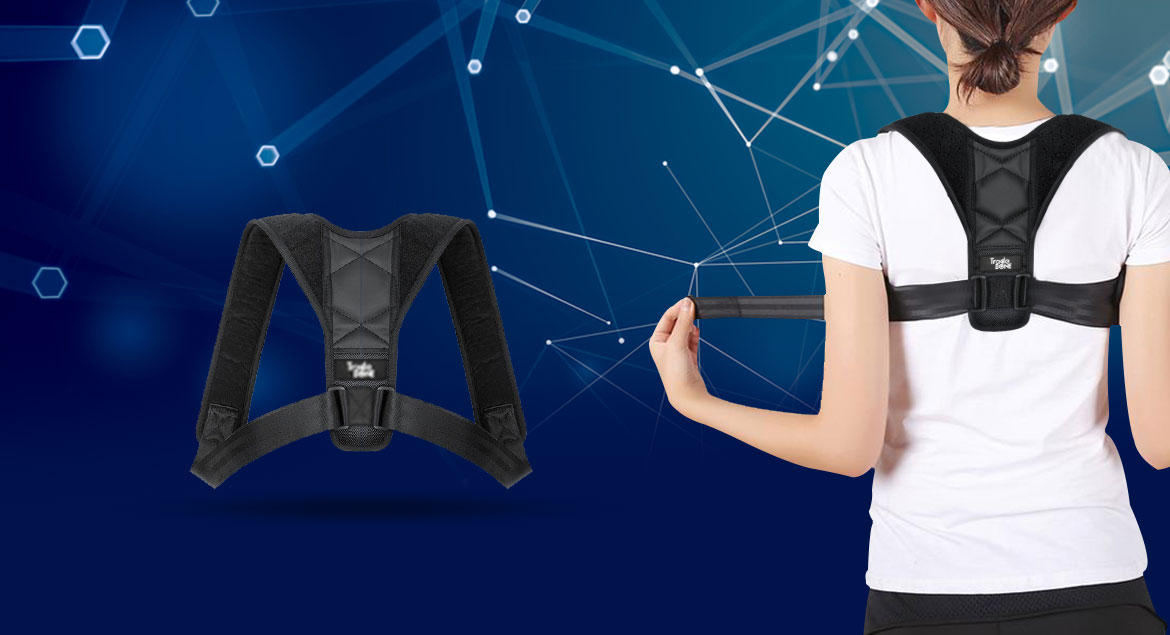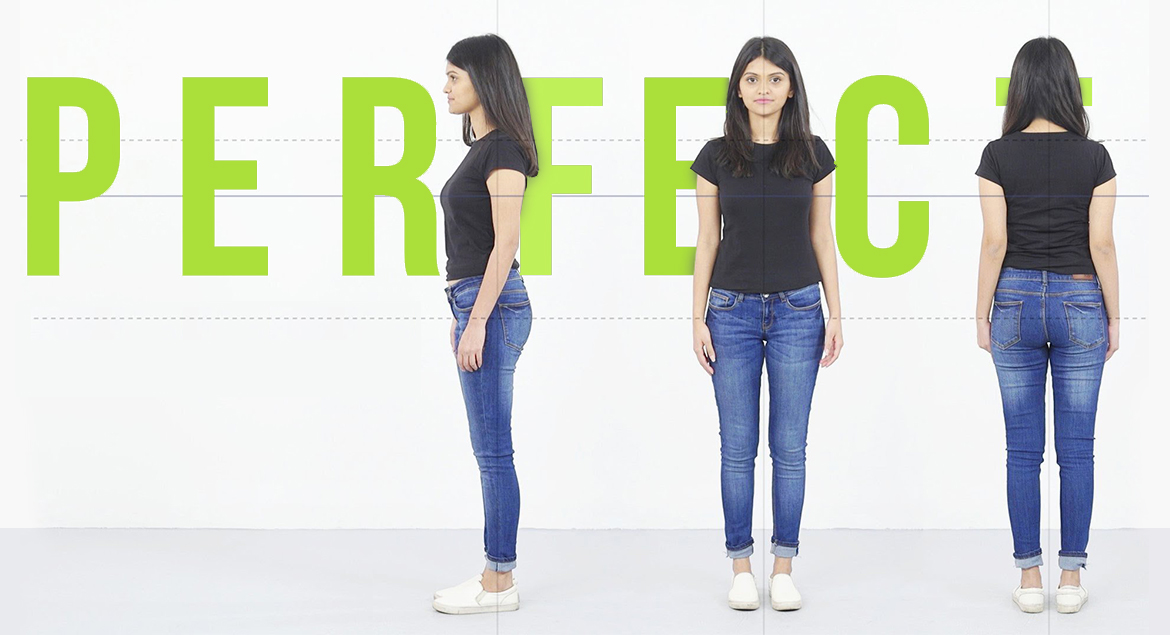The modern age, just like any other dimension of human progress, with its immense scientific prosperity and technological advancements has also given birth to many new problems totally unheard of before. Where we have comforts and luxuries unthinkable for an Arab Bedouin of the past, we also have issues not predicted many centuries ago because of our completely different lifestyles. While either gazing at monitors or bending over to use cell phones, many office workers of today end up developing a poor posture. The typical DJ pose does cause pain in muscles and joints. It has been associated to bad digestion and migraines and doesn’t seem to go away at all. Posture is a common and deteriorating problem due to our hectic routines in the 21st century. Young people, today, have much more pain in back or neck than ever before. As compared to earlier generations, screen-time now gets started at a much younger age. Since people cannot alter the hours being spent at the desk on daily basis, we have opted to suggest other ways to address the same problem.
Alternative Products that Improve Posture
Below we share recommendations for posture-improving products other than the normal posture corrector for office, home and travelling. We care about you a lot and, thus, we researched on your needs in all kinds of situation you find yourself in.
For Office
Varidesk Height Adjustable Standing Desk
Sitting for long durations of time in front of a laptop or desktop causes considerable pain in upper back and neck. Luckily, we have ways for making desk setups more efficient for performance in office. Standing positions put lesser stress on lower back and aid us in achieving upright position. To add greater standing time to our day, Varidesk is recommended as it can easily switch between standing heights and sitting.
Casa Pura Anti Fatigue Mat
While opting for the route of standing desk, spending on an anti-fatigue mat is worthy of additional cost as it cushions taking stress off the joints of back and knees while standing for longer durations.
Basics Adjustable Monitor Stand
It is highly recommended that you use monitor risers when sitting down. When it comes to ergonomics, the height of computer screen can make a lot of difference. Normally, the screen’s top should be 2 two inches above eye level. Many of the office screens are very low. This causes neck strain. The adjustable riser allows you to have that prefect height.
3M Monitor Mount Document Clip
If your work demands you looking up and down between screen and desk papers, we highly recommend a monitor document clip for reducing eye and head movements while working on a laptop or desktop. Maintaining things at the eye level reduces the motions that disrupt your posture.
Easy Posture Lumbar Back Support Mesh
Lumbar support oriented cushions are very important as well. Keeping the lower back’s natural inward curve inevitably improves your neck’s position. Many users love how lumbar support grants them a gentle nudge for sitting up straight and that they can strap on to the chair of their choice. Experts and practitioners claim that a towel or pillow can grant your back the much needed support. This is what you call a neck posture corrector
Econo High Innovative Compact Portable Footrest
For people having shorter legs, sitting throughout the day is very detrimental. If your legs do not comfortably reach the ground while sitting, it will damage your posture causing back pain. You must have something that allows your feet to rest on the floor with comfort. This portable and foldable footrest gives you just that. It features a sliding panel for adaptable surface area. It can be made smaller in size for fitting in tighter spaces e.g. beneath a seat in airplane.
For Home
OPTP Pro-Roller Standard Density Foam Roller
A Foam roller isn’t only for massage of sore muscles. It can become your best friend for correcting your posture. It is recommended that you lay it down perpendicular to the body and roll out your back. If you are accustomed to a rigid roller, try doing this as it is slightly softer and will grant much more comfort in this way.
TheraBand Resistance Bands Set
Another product highlighted by the gym strategy for correcting posture, resistance band exercises activate muscles which have a tendency of slacking off while slouching. Some kinds of stretches do improve your proprioception or your awareness of body in space. This also allows a better posture throughout the day.
The NeckPillow by Tempur-Pedic
Besides getting rid of back and neck pain, this is a pillow that ensures correct spinal alignment which has a very positive impact on your posture throughout the day. A pillow of heavier density like it helps you in relearning proper neck and head position while you sleep. Since the pillow stretches muscles which are tight in those of poor posture, it can take some nights for adjusting to sleep with it.
Chiroflow Pillow
For a great sleeping experience, the hardness of this special pillow filled with water can be attuned by adding and removing water. It utilizes technology which is clinically proved to lessen pain and improve quality of sleep and is our choice if you want to support your neck when you are asleep. The water provides support naturally filling in your neck curve’s space.
For Travel
Upright Go Posture Trainer and Corrector
Although you can find many posture correctors and braces in the market which you can buy and wear right away, expert chiropractors do not suggest that you depend on any of them. If you force your body for good posture through wearing a brace, it may cause your muscles to be even weaker when you start relying on it. A highly technological product, it is a small sensor you wear on your back. It is connected to an app which alerts you if you should adjust your position tracking your posture all day wherever you go. Upright Go is preferred over a brace as it provokes active usage for achieving the results, thus making you improve yourself. We can call it “electronic posture corrector”.
Types of Posture Correctors
Sitting Support Devices
For a lot of people, the biggest problem that has an impact on their spinal health is that they have to sit throughout the day. Most of us end up spending our waking hours on office chairs. While you are too immersed in your official work, you can easily forget about your posture. You can start slouching which exacerbates the impact of our other habits that lead to poor posture. An effective way indeed is to use a passive postural support which encourages a healthy posture because the muscles of your upper/lower back begin strengthening and molding around it. Your back muscles must have considerable endurance if you seek a healthy and upright posture for a long period of time. A lot of people make use of passive support devices for prevention from treatments that are more active. One such product is Better Back that offers muscle training as support for lower back.
Sitting support products are also used as permanent or long-term solutions to prevent slouching. Patients may, at first, find using a passive sitting device uncomfortable but they are bound to become used to it. After an ample period of time, it is an excellent way for achieving a natural and healthy curve in the spine’s base.
Posture Braces
Braces for shoulder and upper back are very good support options for postural training in the treatment’s initial stages. A common problem these types of braces solve is lack of conscious knowing due to a long period of time spent in habits leading to bad posture. The awareness of wearing these things may be strange and does take time to get used to them. Nevertheless, wearing of posture brace for even 15-30 minutes every day is very effective. For instance, Bax-U is a posture corrector designed by doctors suitable for daily usage. It is very useful for correct alignment of spine and is especially designed for superior comfort. It is ideally suited for wearing under clothes.
Recently, there has occurred a rise in development of braces & devices for upper back which feature biofeedback correction as well which basically monitors your back and shoulder’s position when you wear the products. If you are developing a bad posture, these things give audible reminders or short vibrations to ensure you know it is time to quickly rectify your posture. Although these are not suited to everyone, a lot of patients found them very useful in forming habits of good posture.
Lower Back Braces
Good posture will always start from the spine’s base. When you sit, a properly positioned spine with a moderate inward curve is achieved with a brace or passive seating cushion. A common issue lower back braces are used to solve is low awareness caused by years of bad habits. Like shoulder and upper back braces, if you use a brace for lower back for only a short time period on daily basis, it makes your body develop a higher inclination to a healthy posture’s feeling
Kinesiology Tape
Kinesiology Tape is among the options for minimal posture correction. In many cases, it must be used only as a supplementary measure in view of a more extensive treatment. A study published in 2013 utilized taping alone for mitigating upper back pain in someone. The finding was that it was favorable for recovery from conditions related to posture. Kinesiology tape is most suited to those patients who require minimal correction of posture. It is often used as a temporary reminder rather than the sole cure for any big posture problems.
Swiss Ball Chairs
Besides being useful tools for exercise sessions, Swiss balls or gym balls instead of office chairs are also effective in correcting posture. The restrained movements required for staying balanced while residing on them are conducive for a healthy and correct posture. Be aware when you go along with this method because as compared to chairs, it is not a complete treatment. A study published in 2006 claimed that sitting on exercise balls is not sufficient for improving a poor posture. Later, studies found out that they even have the tendency of causing spinal discomfort.
Good Mattresses and Pillows
Our sleeping way does have a considerable impact on our spine’s health. The good side of this is that getting a pillow and mattress which is suited to your posture is indeed a matter of personal preference alone. As long as you are feeling comfortable with them and if they continue to be supportive, they would be apt for your spine as well as neck.
Posture Training
Correct posture requires training your body to sit, stand, lie and walk in positions where there is minimum strain in supporting ligaments and muscles while moving or doing activities of weight bearing. We here provide instructions for correct positions while driving, lifting, sleeping and sitting. Posture is that position where you keep your body upright in opposition to gravity during sitting, standing and lying down. Good posture means you train the body for standing, walking, sitting and lying in positions where there is least amount of strain placed on supporting muscles or ligaments while moving or during weight bearing activity.
Proper posture training ensures that the joints and bones are in the right alignment so the muscles are used efficiently. It prevents joint surfaces from abnormal wearing which can result in arthritis. It lessens stress on ligaments that hold the spine’s joints together. It ensures that the spine doesn’t become fixed in abnormal positions. It avoids fatigue as muscles are utilized more efficiently which allows the body to make use of lesser energy. It is a prevention against strain, overuse problems, backache as well as muscular pain. Surprisingly, it accounts for a good appearance as well. Aesthetics, too, are taken care of to some extent.
Here are the golden rules, special tips and precious guidance on posture training:-
- Sit with a straight back and with shoulders on the back. Your hips should touch your chair’s back.
- All three normal curves of back must be present when sitting. A tiny rolled up towel or lumbar roll can help you in maintaining your back’s normal curves.
- Sit at your chair’s end and hunch completely.
- Draw up yourself and heighten your back’s curve as much as you can. Do it for few seconds.
- Release this position marginally (by 10 degrees). It is a good posture for sitting.
- Evenly distribute the weight of your body on both buttocks.
- Bend knees at the right angle. Keep knees either even with or marginally higher than hips. You can make use of a foot rest or stool. Keep your legs not crossed.
- Your feet should remain flat on floor.
- Try not to sit in same position for above 30 minutes.
- In office, adjust the height of your chair as well as work station so you sit up close to the desk and tilt it towards you. With shoulders relaxed, rest your arms and elbows on your chair/desk.
- While sitting on a chair which rolls or pivots, don’t twist at your waist and, instead, turn your entire body.
- While you stand up from sitting position, move to the front of your chair’s seat. Stand up through straightening the legs. Do not bend forward at your waist.
- Instantly, stretch your back with ten standing backbends.
Do you know how to find a good position for sitting when you don’t use back support and lumbar roll? Here it is:-
- Evenly distribute the weight of your body on both buttocks.
- Bend knees at the right angle. Keep knees either even with or marginally higher than hips. You can make use of a foot rest or stool. Keep your legs not crossed.
- Your feet should remain flat on floor.
- Try not to sit in same position for above 30 minutes.
- In office, adjust the height of your chair as well as work station so you sit up close to the desk and tilt it towards you. With shoulders relaxed, rest your arms and elbows on your chair/desk.
- While sitting on a chair which rolls or pivots, don’t twist at your waist and, instead, turn your entire body.
- While you stand up from sitting position, move to the front of your chair’s seat. Stand up through straightening the legs. Do not bend forward at your waist.
- Instantly, stretch your back with ten standing backbends.
Tips for Good Driving Position
- Put a support for the back (like a lumbar roll) at its curve. Let your knees be at the same or higher level than hips.
- Your seat should be near the steering wheel for supporting your back’s curve. It should be near enough to let your knees bend. Your feet should be reaching the pedals.
Tips for Good Lifting Position
- If you have to lift things, do not lift things which are awkward or heavier in weight than thirty pounds.
- Before lifting a heavy thing, ensure that your footing is firm.
- For picking up something lower than your waist’s level, your back should be straight. You should bend at knees & hips. Don’t bend forward at your waist while your knees are straight.
- Stand with an extensive stance near the thing you are about to pick up and your feet should remain firm on ground. Tighten stomach muscles and lift the thing making full use of your leg muscles. Straighten knees in steady motion. Don’t jolt the thing towards your body.
- Stand fully upright with zero twisting. Remember moving the feet forward while lifting a thing.
- For lifting something from a table, slide it to its edge so you can hold it near your body. Bend the knees so you are near the thing. Also make full use of your legs for lifting it and adopt a standing position.
- Avoid lifting of heavy things above the level of your waist.
- Hold packages near the body with arms bent. Keep stomach muscles tightened. Take tiny steps and go in a slow manner.
- For lowering the thing, place the feet like when you lifted, make your stomach muscles tight while bending your knees and hips.
Which is a Good Position for Sleeping or Lying Down?
- Irrespective of which position you lie in, your pillow must be under the head but not the shoulders and must be thick enough for allowing the head to remain in a normal position.
- Try sleeping in a position that maintains your back’s curve. Avoid sleeping on your side with knees drawn-up to the chest. Do not sleep on your stomach especially on a loose mattress as it may cause back strain and discomfort for the neck.
- Choose a stable mattress & box spring set which doesn’t sag at all. If needed, put a board beneath your mattress. You may even put your mattress on the floor briefly if required. If you have always been sleeping on a soft area, it can be more painful to switch to a hard one. Try adopting that which is most comfortable.
- Try to use a back support in the night for being more comfortable. A rolled towel or sheet tied around the waist can be helpful.
- While standing up after the lying position, do turn on your side drawing up both knees and swinging the legs on the bed’s side. Sit up with pushing up yourself with hands. Do not bend forward at the waist.
The recommendations mentioned above would benefit most of the people who have back pain. If any guideline causes further increase in pain or transferring of pain to legs, stop continuing the activity and get expert advice from a physical therapist or physician.




